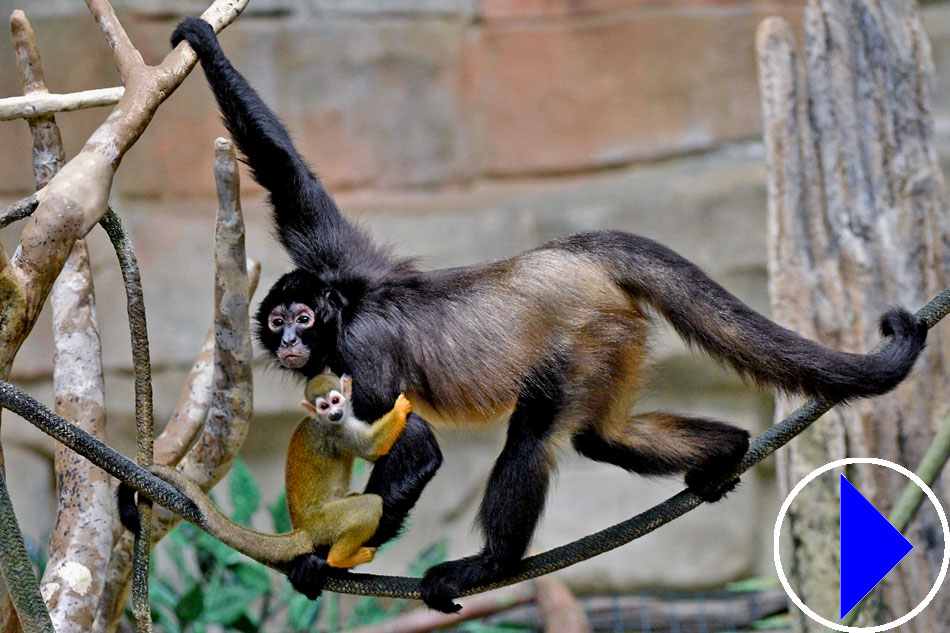
SPIDER MONKEYS, BEARDSLEY ZOO, LIVE WEBCAM
- Local time
- Location: Beardsley Zoo, Bridgeport, Connecticut, United States
- Source: www.beardsleyzoo.org
-
Info: Live spider monkey webcam at Beardsley Zoo in Connecticut. The spider monkeys shown are in their oudoor enclosure.
The camera is live from 8:30AM-6:00PM Local Time
View the location of Beardsley Zoo in Connecticut, with Mapquest
To see more live views of apes and monkeys, visit: Live Ape and Monkey Webcams
More Info: Spider monkeys are primitive monkeys of the New World who are native to Central and South America and occur as far north as Mexico. Different species of spider monkey hail from different regions.
The body and limbs of spider monkeys are slender and they have long narrow hands. Their muscular, tactile prehensile tail is used like an extra hand. Their hands act like hooks, having long curved fingers but no thumbs – however, they do have thumbs on their feet. Their name comes from having the appearance of a spider as they hang by their tale from trees with limbs hanging down.
The spider monkey diet consists of around 90% fruit. However, depending on fruit availability and the time of year, they will also eat flowers, leaves, honey, nuts, insects, bird eggs, sap and even bark. Each small group has a specified time and route for foraging that is determined by the dominant female.
Spider monkeys play an important role in the dispersal of seeds of plants and flowers throughout their habitat. The path through a spider monkey digestive tract can soften the outer layer of fruit seeds as well - a process crucial for some tree species to germinate.
There is no set breeding season for spider monkeys. Females determine when or if they will reproduce, only giving birth to a single offspring every two to five years – something determined mainly by the availability of food and water. If conditions are optimal, the females will go into oestrus, and if it is less than ideal, then they will not breed until conditions improve.
Additional Information:

